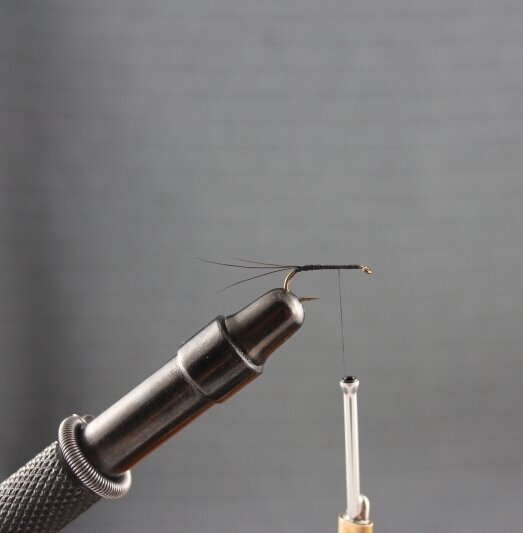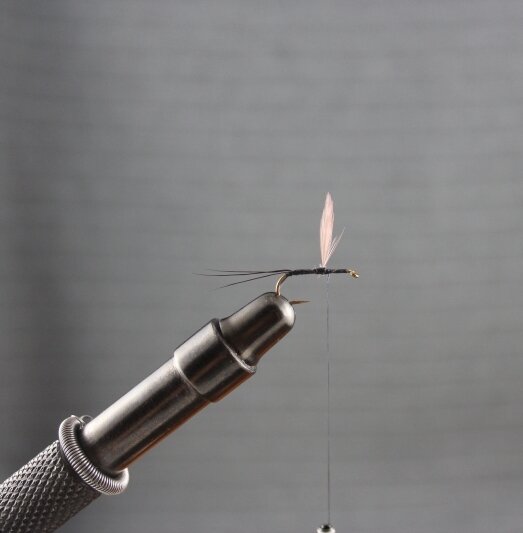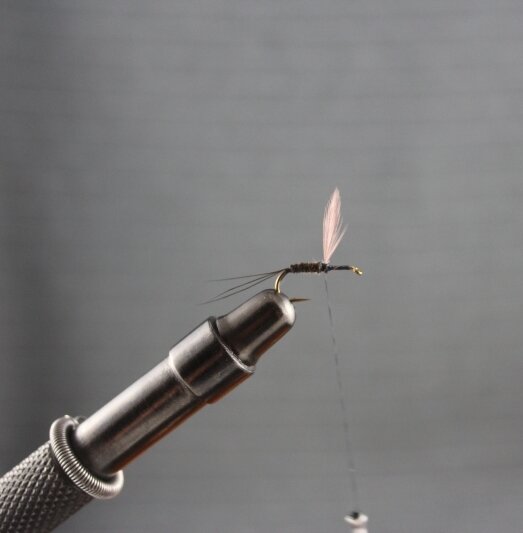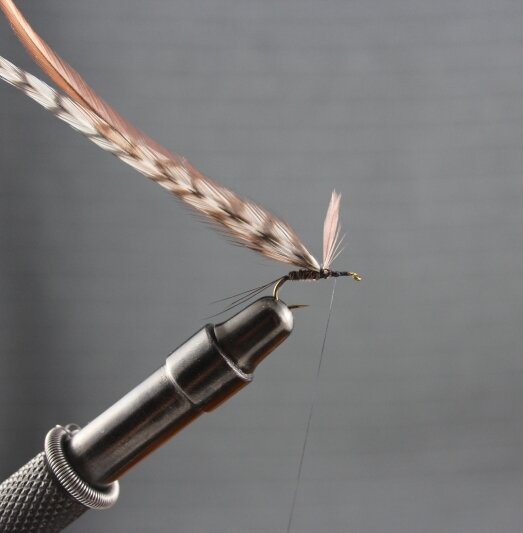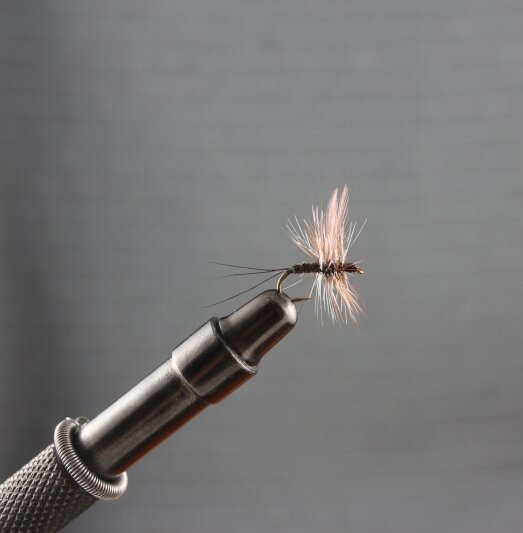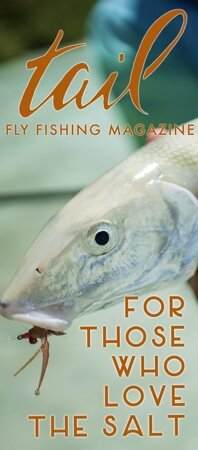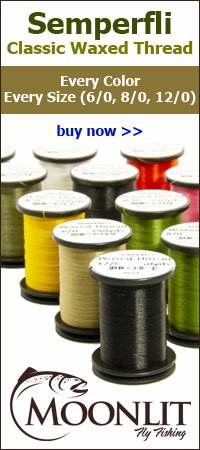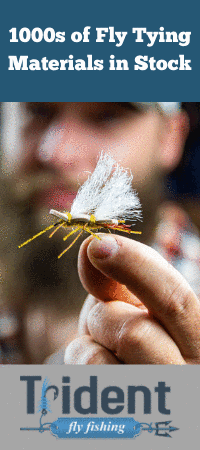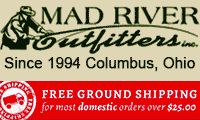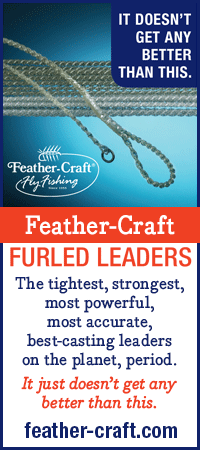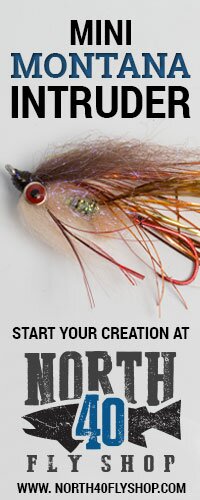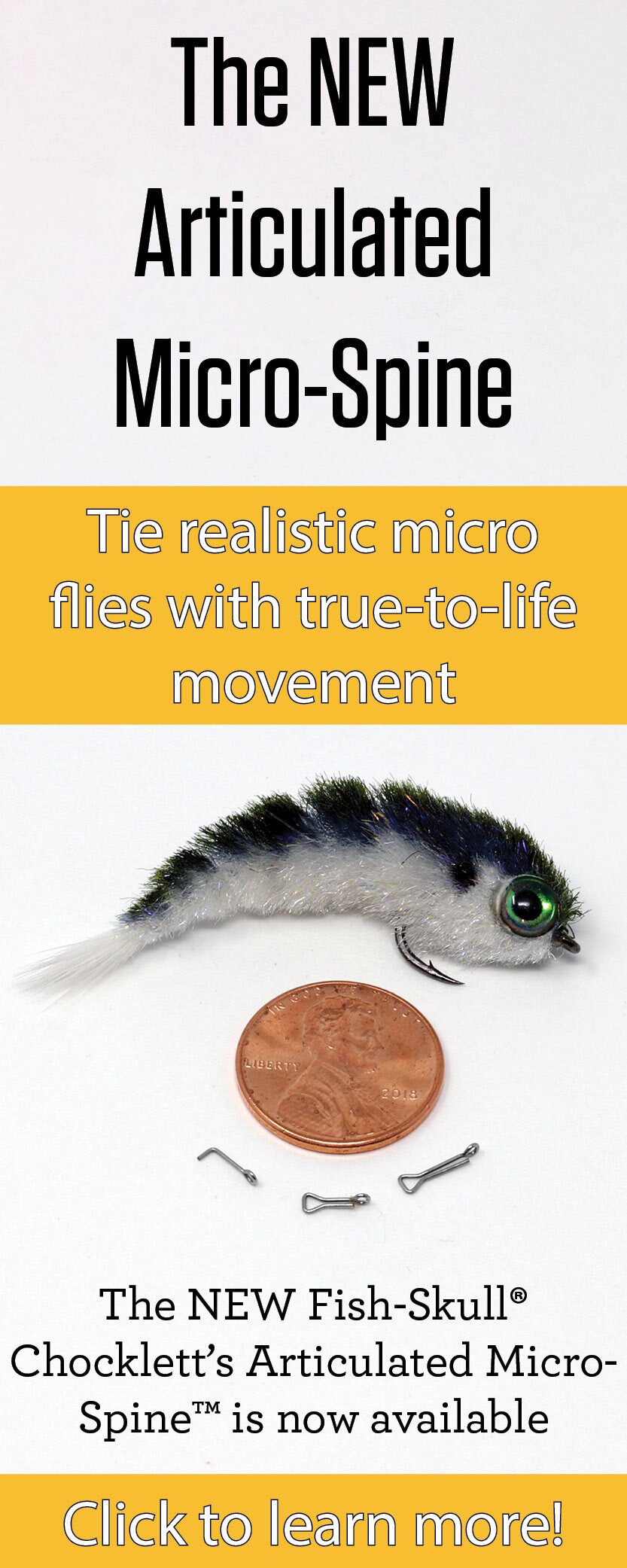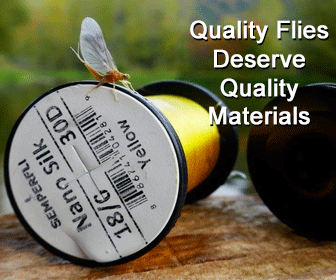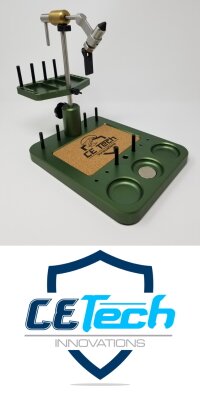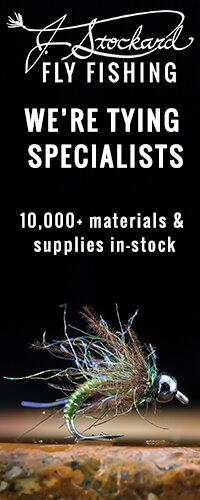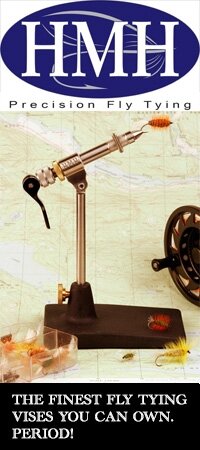The Borchers Special was created by Ernie Borchers for use on the Au Sable River in Grayling, Michigan. I’ll post more about the history of this fly at a later time. For now, here is my step-by-step on how to tie the Borchers Special.
Borchers Special
hook: dry fly sizes 8-16
tail: moose mane
body: turkey tail quills
wings: blue dun hackle tips
hackle: (Rhode Island Red or brown) and grizzly
Step 1: With a dry fly hook in the vise, wrap the thread from the eye of the hook back to the bend. I’m using a size 10 Mustad 94840 hook and with Danville 3/0 black thread. 6/0 is a good size to use especially on hook sizes 12 and under. I opted to use 3/0.
Step 2: Return the thread to the ½ way point, and tie in three moose mane fibers for the tail here, holding them slightly above the hook while wrapping back to the barb. Clip the tail stub at the ½ way point as you return the thread to the wing tie in point. Then in the next step when wrapping the wing butts, wrap them on to the same point to blend their stubs to the tail stubs. This will create a smoother under-body.
Step 3: Select two blue dun hackle tips to use for wings. Line them up and put the shiny sides together. Try to keep the length of the feathers as long as the hook shank, measuring from the eye to the bend of the hook. Hold together and lie them down on the hook shank with the tips extending past the hook eye. It helps to hold the tips and spread the other fibers away from the tie-in point of the tips. Tie down and cut the excess off. If you strip the barbs from the end of the hackle and tie down a bare stem, it will help with the amount of loose barbs you have to try and tame or clip off. Make sure they are tied securely and then pull the tips up holding them back toward the hook bend while making several thread wraps in front. This will make the tips standup straight. Then take the thread and make a wrap between the feathers. Then make another one the other way between them like a figure eight. This should keep the tips separated to form wings.
Today, the way the birds are bred for shiny long feathers, creates a great dry fly hackle, but the tips are really narrow for a proper wing profile. You might experiment by trying hen neck tips to obtain a better profile.
Step 4: Cut several long barbs from a turkey tail feather. Eight to ten barbs for a size 10, six to eight for a 12, four to five for a 14, and two or three for a size 16 is about right. Tie the turkey in by the very tips, leaving space behind the wing for the hackle. Wrap down to the tail, and return thread to the body tie-in point. Gently twist the turkey tail and start wrapping it around the hook in touching turns, while keeping it twisted. Wrap the body up to just behind the wings (remember to leave space for the hackle,) and make several wraps to secure the turkey tail into place. Cut off the excess and make a few more wraps with the thread.
Step 5: Select one brown and one grizzly hackle. You should select dry fly quality saddle or neck hackles with a minimal amount of web. The hackle barbs should extend approximately 1.5 the gap of the hook when wrapped. A hackle gauge can be used to help measure. Strip the fluff and barbs from the base of the hackles to make them easier to tie in. Put the feathers together and place the stems next to the wings on the hook setting them on their edge. The dull parts of the feathers should be facing the tier. Make several tight wraps with thread, behind and just in front of the wings.
Step 6: Once secured, grip the feathers by their tips. Hackle pliers can be used if you have trouble holding them with your fingers. Some tiers wrap both feathers at the same time and others wrap one first and then the other, wrapping in-between the first hackle with the second. Make three or four wraps behind the wings and two or three wraps in front of the wings. While holding the hackle in place make several wraps of thread to hold it in place. To add durability to your hackle, take the thread and make several wraps back through the hackle wraps. Rocking the thread bobbin left to right will help weave the thread in-between the hackle, without trapping too many barbs beneath the thread. Wrap the thread back up next to the eye of the hook, build up a small head, and whip finish. Use a drop of head cement, or a second whip finish to add durability to the head.


